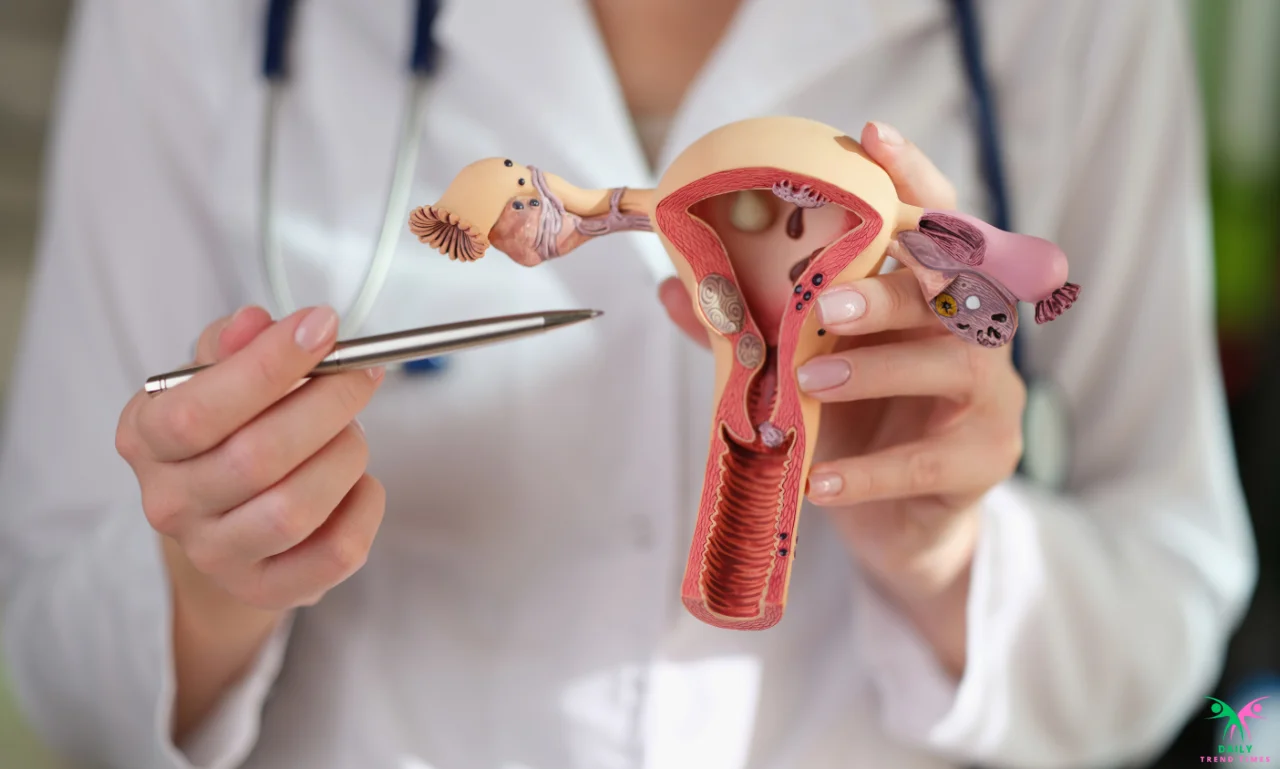Fibroids, alternatively termed uterine leiomyomas, are benign tumors of the uterus frequently observed during a woman’s reproductive years. Within the spectrum of fibroid types, subserosal fibroids are notably prevalent. These fibroids develop on the outer wall of the uterus and can have significant impacts on a woman’s health and quality of life. This article will investigate the complexities of subserosal fibroids, covering their side effects, causes, conclusions, and accessible treatment modalities.
What Are Subserosal Fibroids?
Subserosal fibroids grow on the outside of the uterus, beneath the serosa (the outermost layer of the uterus). They can vary in size from tiny nodules to large masses that can distort the shape of the uterus. Unlike other types of fibroids, such as intramural and submucosal fibroids, subserosal fibroids typically do not affect menstrual flow directly but can cause other symptoms due to their size and location.
Symptoms of Subserosal Fibroids
The manifestations of subserosal fibroids primarily rely on their dimensions and positioning. Common symptoms include:
- Pelvic Pain and Pressure: As they grow, subserosal fibroids can exert pressure on surrounding organs, causing pelvic discomfort or pain.
- Back Pain: Large fibroids can press against the spinal nerves, leading to lower back pain.
- Abdominal Distension: Larger fibroids can cause noticeable swelling or distension of the abdomen.
- Frequent Urination: Fibroids that press against the bladder can lead to increased frequency of urination or difficulty emptying the bladder.
- Constipation: When fibroids press on the rectum, they can cause constipation or difficulty with bowel movements.
Causes and Risk Factors
The exact cause of fibroids is unknown, but several factors may contribute to their development:
- Genetic Factors: Having relatives with fibroids raises the chances of developing this condition.
- Hormonal Influence: Estrogen and progesterone, hormones that regulate the menstrual cycle, seem to promote the growth of fibroids.
- Age: Fibroids are more common in women in their 30s and 40s and tend to shrink after menopause.
- Ethnicity: A higher likelihood of developing fibroids is observed among African-American women in comparison to women from other ethnic backgrounds.
- Lifestyle Factors: Obesity, high blood pressure, and dietary factors (such as a diet high in red meat and low in green vegetables) can increase the risk of fibroids.
Diagnosis
Diagnosing subserosal fibroids typically involves a combination of medical history, pelvic examination, and imaging tests:
- Ultrasound: This is the most common imaging test used to detect fibroids. It provides a clear image of the uterus and the location of fibroids.
- Magnetic Resonance Imaging (MRI): MRI provides detailed images of the size and location of fibroids and can help distinguish between different types of fibroids.
- CT Scan: Less commonly used, CT scans can also detect fibroids and provide detailed images of the pelvic area.
- Hysteroscopy or Laparoscopy: These minimally invasive procedures allow direct visualization of the uterus and fibroids.
Treatment Options
The treatment of subserosal fibroids depends on the severity of symptoms, the size and location of the fibroids, and the patient’s desire for future pregnancies. Treatment options include:
- Watchful Waiting: For women with mild symptoms, regular monitoring of fibroid growth and symptoms may be sufficient.
- Medications: Hormonal treatments can help regulate menstrual cycles and reduce symptoms but do not eliminate fibroids. Gonadotropin-releasing hormone (GnRH) agonists, birth control pills, and anti-inflammatory drugs are common options.
Non-Invasive Procedures:
- Uterine Fibroid Embolization (UFE): This procedure blocks the blood supply to the fibroid, causing it to shrink.
- Magnetic Resonance Guided Focused Ultrasound (MRgFUS): This therapy utilizes directed ultrasound waves to eradicate fibroid tissue.
Surgical Options:
- Myomectomy: Surgical removal of fibroids while preserving the uterus, which can be done via hysteroscopy, laparoscopy, or traditional abdominal surgery.
- Hysterectomy: Complete removal of the uterus, which is a definitive solution for fibroids but ends fertility.
Conclusion
A subserosal fibroid can be a common and often manageable condition. Understanding the symptoms, causes, and available treatment options can help women make informed decisions about their health. If you suspect you have fibroids or are experiencing symptoms, consult a healthcare provider for an accurate diagnosis and personalized treatment plan. Regular check-ups and staying informed about advancements in fibroid treatment can significantly improve the quality of life for those affected by this condition.

Hello, I’m Salman Khayam, the creator and voice behind this platform. As someone passionate about offering practical knowledge, I’ve built this blog to provide you with well-crafted content on a wide range of subjects. Whether it’s improving your well-being, staying fit, learning about nutrition, or enhancing your daily lifestyle, I’m here to share expert tips and thoughtful advice to help you grow and thrive in all areas of life.

